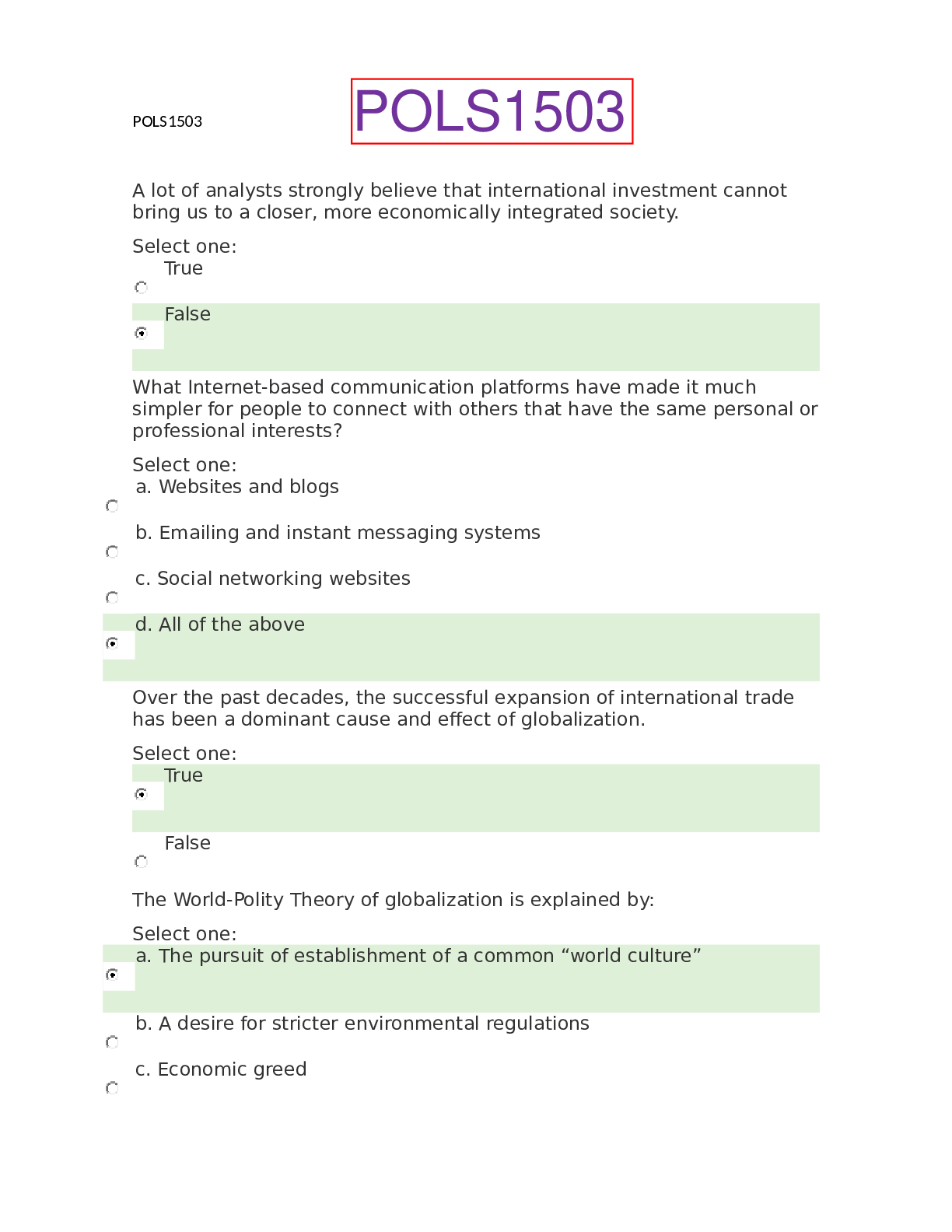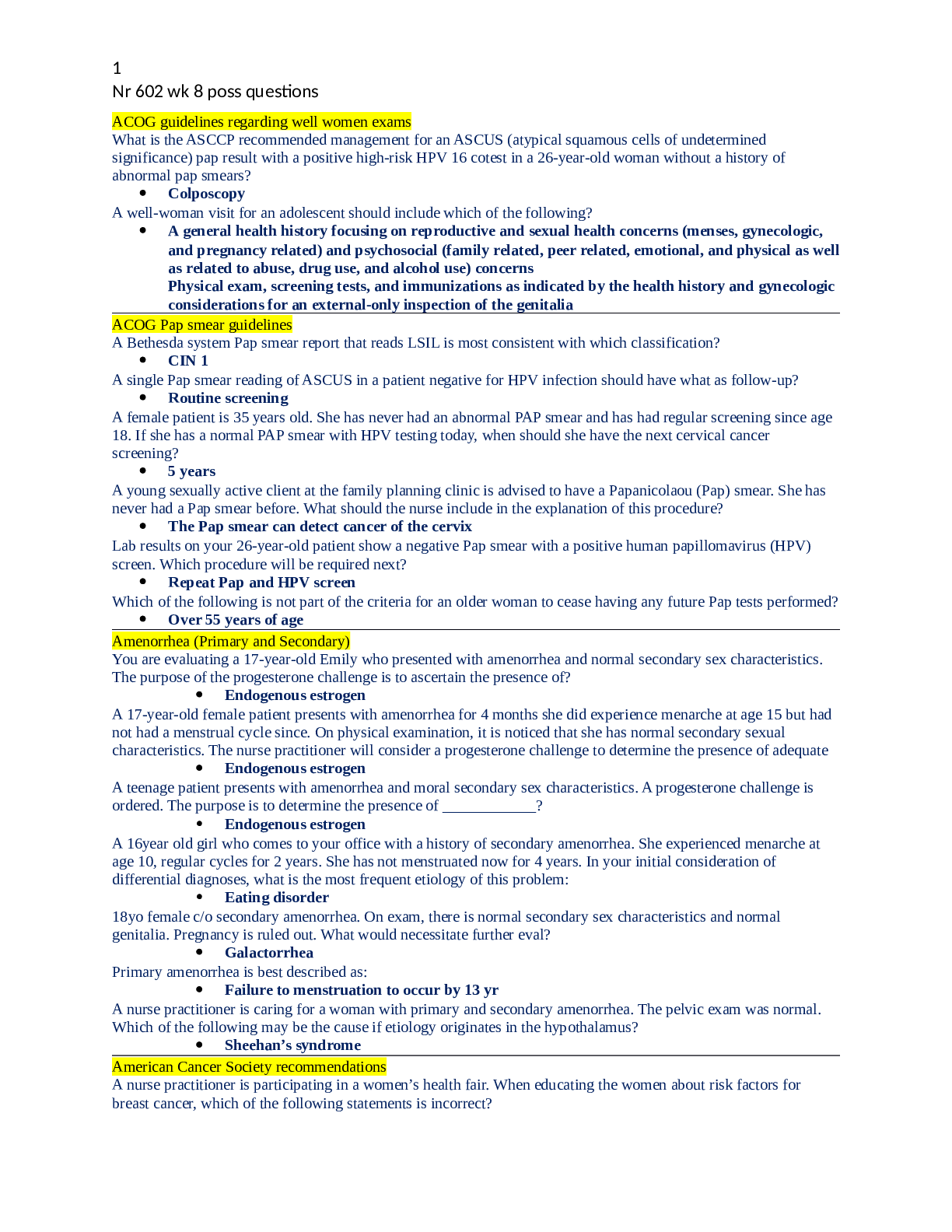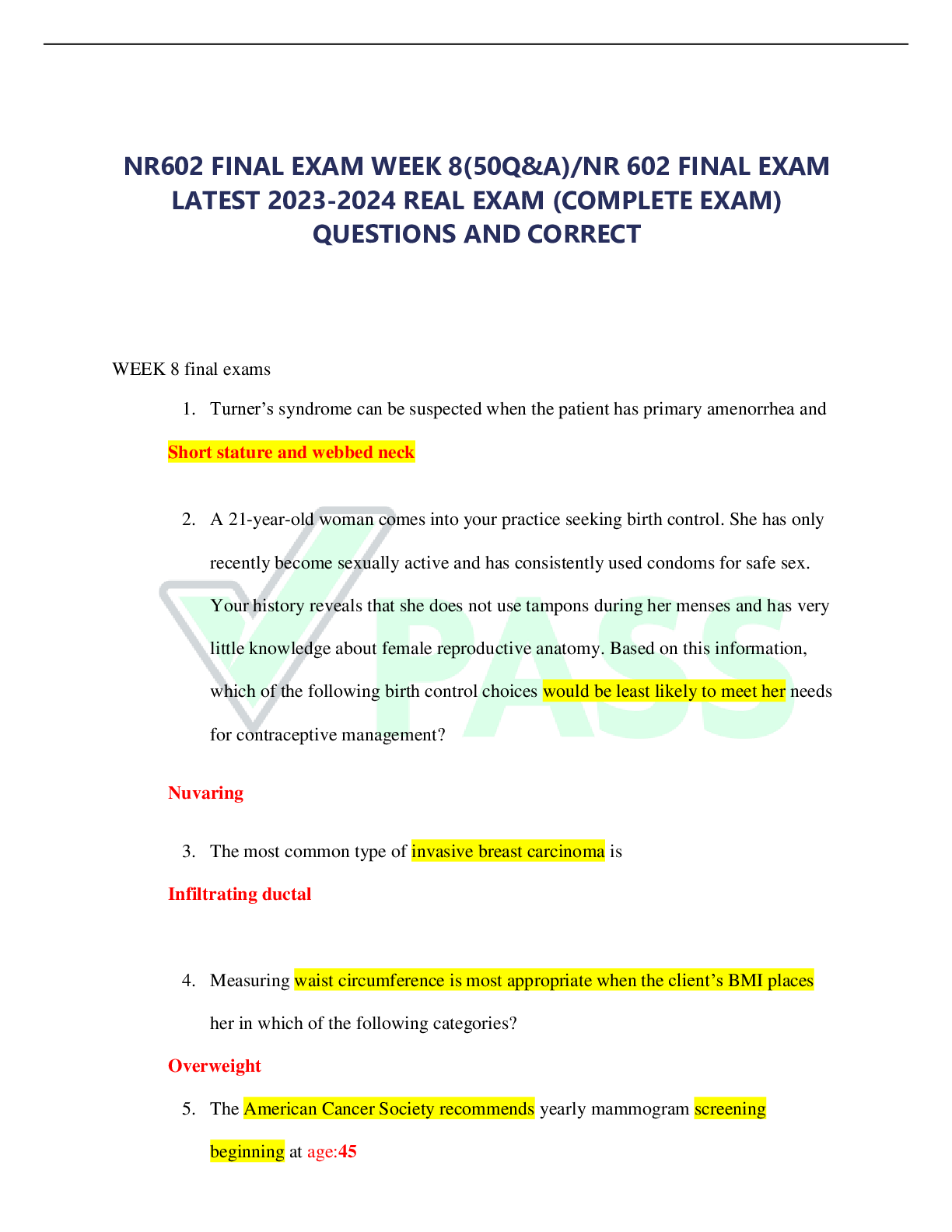Health Care > EXAM > ADULT HEALTH NUR3241_ 2021 / NUR3241 Question Collection: Final Exam Prep 153 Questions and answers_ (All)
ADULT HEALTH NUR3241_ 2021 / NUR3241 Question Collection: Final Exam Prep 153 Questions and answers_ 2021
Document Content and Description Below
Question Collection: Final Exam Prep 153 Questions 1. In which instance may a surgeon operate without informed consent? a. Invasive procedures b. Emergency situations c. Procedures requiring se dation... d. Radiologic procedures 2. The nurse is completing a preoperative assessment. The nurse notices the client is tearful and constantly wringing their hands. The client states, “I’m really nervous about this surgery. Do you think it will be ok?” What is the nurse’s best response? a. “You have nothing to worry about; you have the best surgical team.” b. “No one has ever died from the procedure you are having.” c. “What family support do you have after the surgery?” d. “What are your concerns?” 3. The nurse is educating a client scheduled for elective surgery. The client currently takes aspirin daily. What education should the nurse provide with regard to this medication? a. Continue to take the aspirin as ordered. b. Take half doses of the aspirin until 1 week after surgery. c. Aspirin should be increased until 3 days before surgery, then it should be discontinued until 3 days after surgery. d. Stop taking the aspirin 7 days before the surgery, unless otherwise directed by your physician. 4. What is the major purpose of withholding food and fluid before surgery?a. Prevent overhydration b. Decrease urine output c. Prevent aspiration d. Decrease risk of constipation 5. During the admission history the client reports to the nurse of taking the usual dose of warfarin the previous day. What is an appropriate nursing action? a. Notify the surgeon that the client took warfarin the day before surgery. b. No action is needed, because the client takes warfarin on a continuing basis. c. Put a note on the preoperative checklist before sending the client into surgery. d. Tell the client to inform the circulating nurse before the anesthesia is administered. 6. The nurse is aware that a religious group that refuses blood transfusions for religious reasons is: a. Catholics b. Jehovah's Witnesses c. Jews d. Methodists 7. The nurse is monitoring a presurgical patient for electrolyte imbalance. Which classification of medication may cause electrolyte imbalance? a. Corticosteroids b. Diuretics c. Phenothiazines d. Insulin 8. The nurse is aware that which of the following nutrients promotes normal blood clotting? a. Magnesium b. Vitamin C c. Zinc d. Vitamin K 9.A registered nurse who is responsible for coordinating and documenting client care in the operating room is a a. circulating nurse. b. scrub nurse. c. anesthetist. d. anesthesiologist. 10. The surgical unit nurse is developing a postoperative plan of care. In which client’s plan of care would the nurse document interventions of coughing and deep breathing, gastrointestinal assessment, and effective regulation of temperature? a. A client with gastrointestinal surgery and general anesthesia b. A client having a knee replacement and regional anesthesia c. A client having lower extremity muscle repair and spinal anesthesia d. A client with spinal stenosis and a regional nerve blockade 11. A nurse on the surgical team has been assigned the role of scrub nurse. What action by the scrub nurse is appropriate? a. Leading the surgical team in a debriefing session b. Keeping all records and adjusting lights c. Handing instruments to the surgeon and assistants d. Coordinating activities of other personnel 12. A patient is scheduled to have a heart valve replacement with a porcine valve. Which patient does the nurse understand may refuse the use of any porcine-based product? a. A patient of Catholic faith b. A patient of Jewish faith c. A patient of Baptist faith d. A patient of Lutheran faith 13. In which position would a client undergoing a lumbar puncture be placed?a. Supine b. Semi-Fowler's c. Side-lying, knees to chest d. Trendelenburg 14. It is important for the nurse to assist a postsurgical client to sit up and turn the head to one side when vomiting in order to a. maximize comfort. b. avoid dizziness. c. avoid aspiration. d. help eliminate inhaled anesthetics. 15. The client complains of weakness and dizziness as the nurse assists the client to sit on the side of the bed. The nurse recognizes the client is experiencing: a. acute pain b. anxiety c. incisional pain d. orthostatic hypotension 16. A client who had abdominal surgery 4 days ago reports that "something gave way" when he sneezed. The nurse observes a wound evisceration. Which nursing action is the first priority? a. Applying a sterile, moist dressing b. Monitoring vital signs c. Inserting a nasogastric (NG) tube d. Putting the client on nothing-by-mouth (NPO) status 17. What intervention by the nurse is most effective for reducing hospital-acquired infections? a. Administration of prophylactic antibiotics b. Aseptic wound care c. Control of upper respiratory tract infections d. Proper hand-washing techniques18. Which action should a nurse perform to prevent deep vein thrombosis when caring for a postsurgical client? a. Reinforce the need to perform leg exercises every hour when awake b. Massage the calves or thighs c. Instruct the client to cross the legs or prop a pillow under the knees d. Maintain bed rest 19. A client has undergone surgery to repair a hernia, with no complications. In the immediate postoperative period, which action by the nurse is most appropriate? a. Monitor vital signs every 15 minutes b. Measure arterial blood gas every 5 minutes c. Measure urinary output every 15 minutes d. Assess pupillary response every 5 minutes 20. Which of the following sets of clinical data would allow the nurse to conclude that the nursing actions taken to prevent postoperative pneumonia have been effective? a. Vital signs within normal limits; absence of chills and cough b. Alert and oriented; peripheral pulses present and strong c. Bladder non—distended; Foley catheter draining clear, yellow urine d. Bowel sounds present and active; denies nausea and vomiting 21. A client receiving moderate sedation for a minor surgical procedure begins to vomit. What should the nurse do first? a. Roll the client onto his or her side. b. Suction the mouth. c. Provide a basin. d. Administer an antiemetic medication. 22. A nurse is monitoring a client recovering from moderate sedation that was administered during a colonoscopy. Which finding requires the nurse's immediate attention? a. Heart rate of 84 beats/minuteb. Oxygen saturation (SaO2) of 85% c. Decreased cough and gag reflexes d. Blood-tinged stools 23. The nurse is teaching the client about usual side effects associated with spinal anesthesia. Which of the following should the nurse include when teaching? a. Sore throat b. Itching c. Seizures d. Headache 24. The nurse understands that the purpose of the “time out” is to: a. verify all necessary supplies are available. b. identify the client’s allergies. c. clarify the roles of the OR personnel. d. maintain the safety of the client. 25. A client undergoing coronary artery bypass surgery is subjected to intentional hypothermia. The client is ready for rewarming procedures. Which action by the nurse is appropriate? a. Temporarily set the OR temperature to 30°C. b. Place warm damp drapes on the client, replacing them every 5 minutes. c. Administer IV fluids warmed to room temperature. d. Apply a warm air blanket, gradually increasing body temperature. 26. Which statement by the client indicates further teaching about epidural anesthesia is necessary? a. "I will become unconscious." b. "I will lose the ability to move my legs." c. "I will be able to hear the surgeon during the surgery." d. "A needle will deliver the anesthetic into the area around my spinal cord." 27.The nurse caring for a client receiving a transfusion notes that 15 minutes after the infusion of packed red blood cells (PRBCs) has begun, the client is having difficulty breathing and complains of severe chest tightness. What is the most appropriate initial action for the nurse to take? a. Notify the client's health care provider b. Stop the transfusion immediately. c. Remove the client's IV access. d. Assess the client's chest sounds and vital signs. 28. The nurse begins a routine blood transfusion of packed red blood cells (PRBCs) at 1100. To ensure client safety, the unit of blood should be completely transfused by what time? a. 1115 b. 1500 c. 1530 d. 1600 29. For a client diagnosed with pernicious anemia, the nurse emphasizes the importance of lifelong administration of a. Vitamin A b. Vitamin C c. Folic acid d. Vitamin B12 30. The nurse is caring for four clients on the medical-surgical unit of the hospital. What client is mostly likely to be receiving treatment for sickle cell crisis? a. A 29-year-old Caucasian male b. A 19-year-old African American male c. A 24-year-old Native American female d. A 36-year-old Eastern European female 31. Which type of hemolytic anemia is categorized as inherited disorder?a. Sickle cell anemia b. Autoimmune hemolytic anemia c. Cold agglutinin disease d. Hypersplenism 32. The nurse is caring for an older adult client who has a hemoglobin of 9.6 g/dL and a hematocrit of 34%. To determine where the blood loss is coming from, what intervention can the nurse provide? a. Observe stools for blood. b. Observe the gums for bleeding after the client brushes teeth. c. Observe the sputum for signs of blood. d. Observe client for facial droop. 33. While assessing a client, the nurse will recognize what as the most obvious sign of anemia? a. Pallor b. Tachycardia c. Flow murmurs d. Jaundice 34. A client diagnosed with a cataract comes into the clinic. What assessments should the nurse observe in this client? a. A burning sensation and the sensation of an object in the eye b. Blurred or cloudy visual image c. Inability to produce sufficient tears d. A swollen lacrimal caruncle 35. A colleague has been splashed in the eye with cleaning solution. Which of the following would be the priority? a. Finding out what the substance was b. Irrigating the eye immediately with tap water c. Covering the eye with a clean sterile dressing d. Instilling a local anesthetic into the eye 36. Which of the following eye disorders is caused by an elevated intraocular pressure (IOP)?a. Glaucoma b. Cataracts c. Hyperopia d. Myopia 37. A patient has had cataract extractions and the nurse is providing discharge instructions. What should the nurse encourage the patient to do at home? a. Maintain bed rest for 1 week. b. Lie on the stomach while sleeping. c. Avoid bending the head below the waist. d. Lift weights to increase muscle strength. 38. An older adult patient has noticed a significant amount of vision loss in the last few years. What does the nurse recognize as the most common cause of visual loss in older adults? a. Macular degeneration b. Ocular trauma c. Retinal vascular disease d. Uveitis 39. Some clients with acoustic neuromas have vertigo. What is a priority nursing action for clients with vertigo? a. Protect the client from injury. b. Provide small meals of tepid food. c. Mobilize the client at every opportunity. d. Provide ice to the affected ear. 40. A client who comes to the ambulatory care facility states, "It feels like things are moving or spinning around me." The nurse interprets this as indicating which of the following? a. Dizziness b. Nystagmus c. Vertigo d. Motion sickness41. The nurse caring for a client with Ménière's disease needs to assist with what when the client is experiencing an attack? a. Sleeping b. ADLs c. Coughing d. URIs 42. Which nursing diagnosis takes highest priority for a client admitted for evaluation for Ménière's disease? a. Acute pain related to vertigo b. Imbalanced nutrition: Less than body requirements related to nausea and vomiting c. Risk for deficient fluid volume related to vomiting d. Risk for injury related to vertigo 43. The nurse is developing a plan of care for a client with Meniere's disease and identifies a nursing diagnosis of excess fluid volume related to fluid retention in the inner ear. Which intervention [Show More]
Last updated: 1 year ago
Preview 1 out of 36 pages
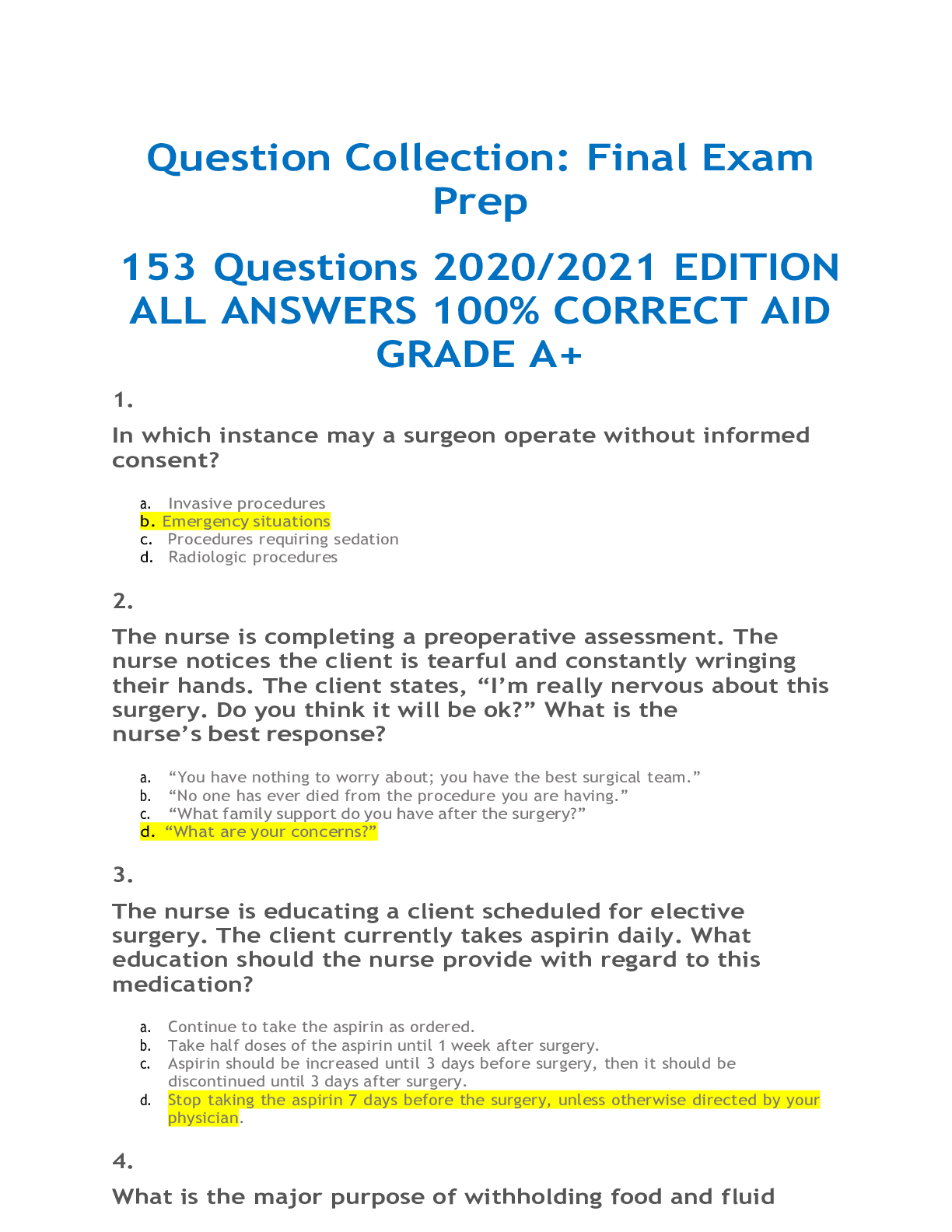
Reviews( 0 )
Document information
Connected school, study & course
About the document
Uploaded On
Oct 13, 2021
Number of pages
36
Written in
Additional information
This document has been written for:
Uploaded
Oct 13, 2021
Downloads
0
Views
18

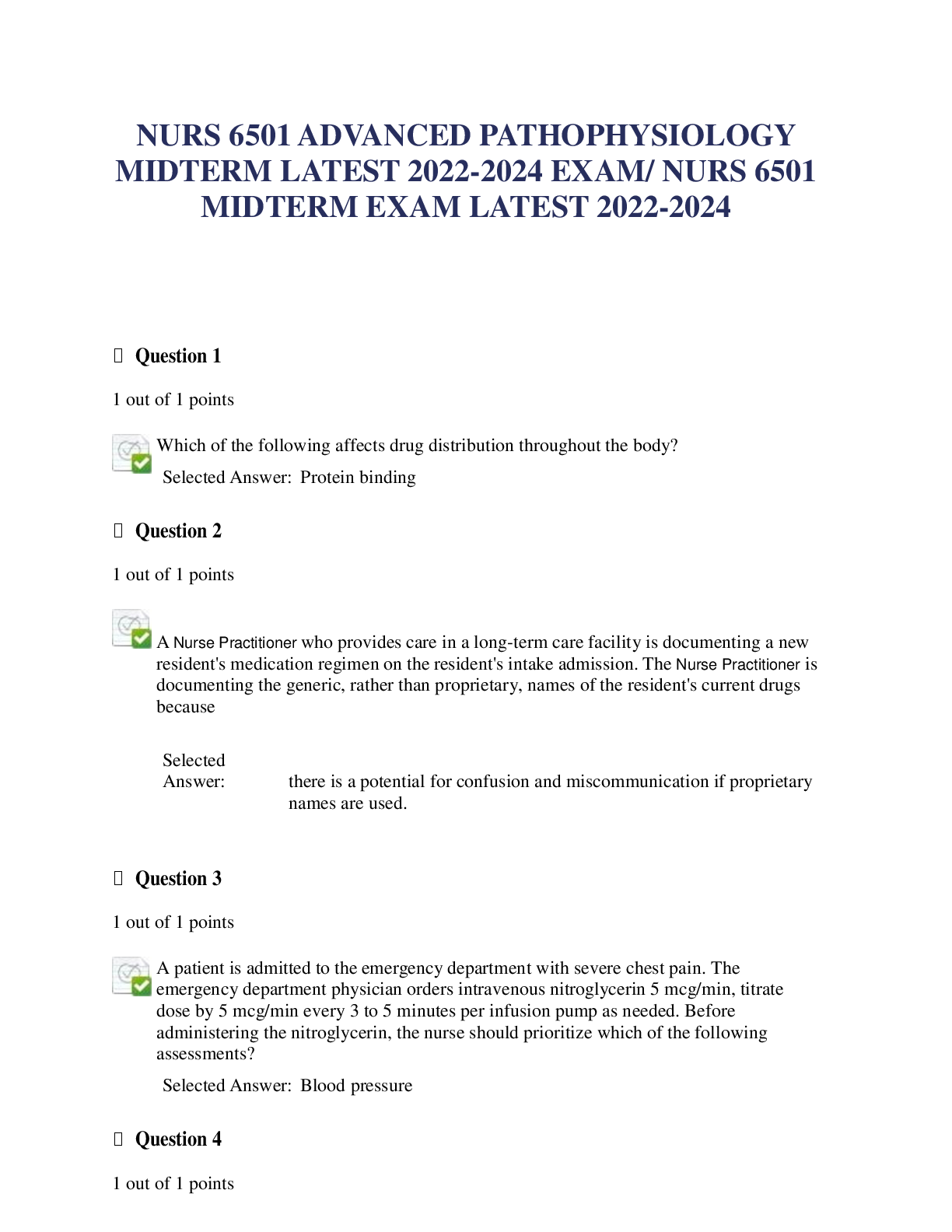
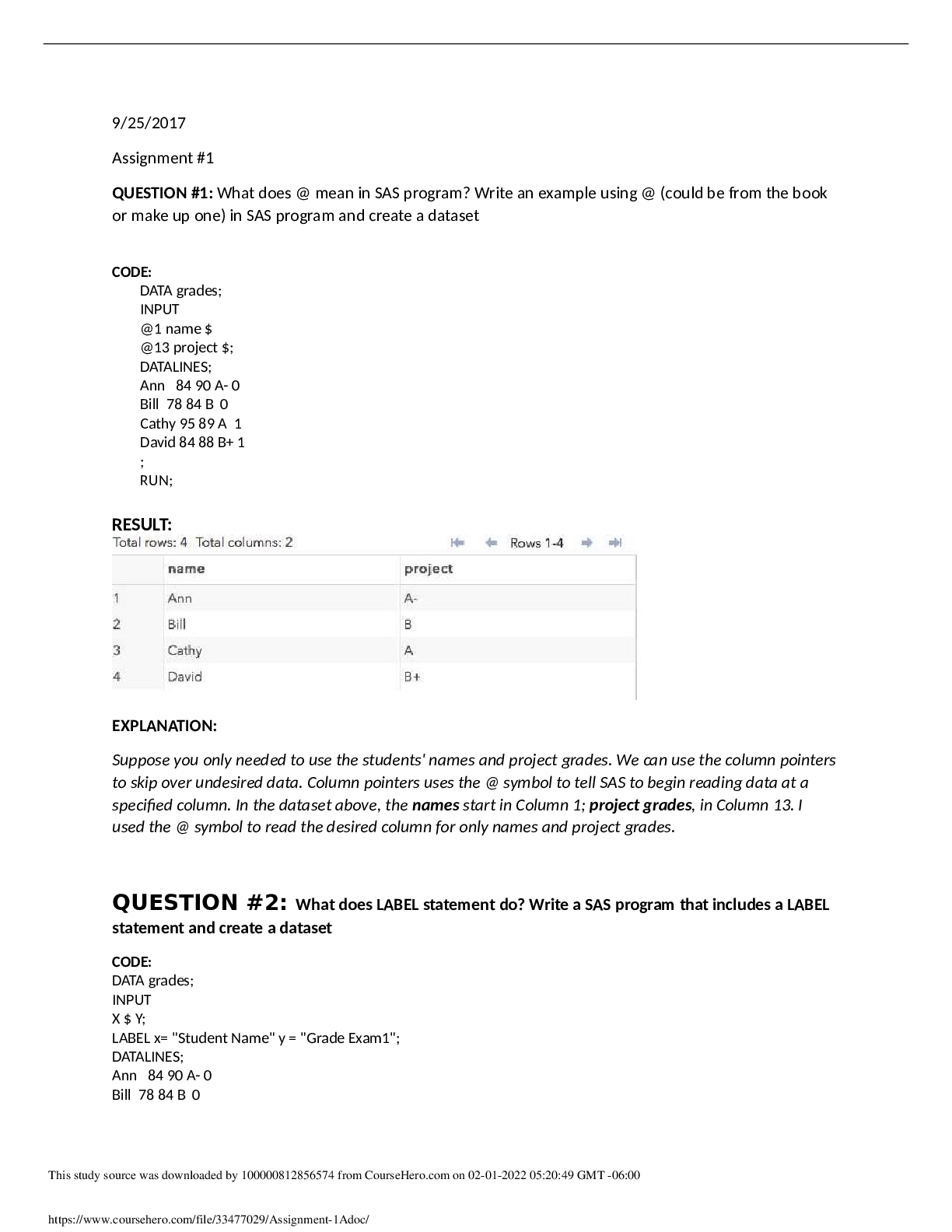
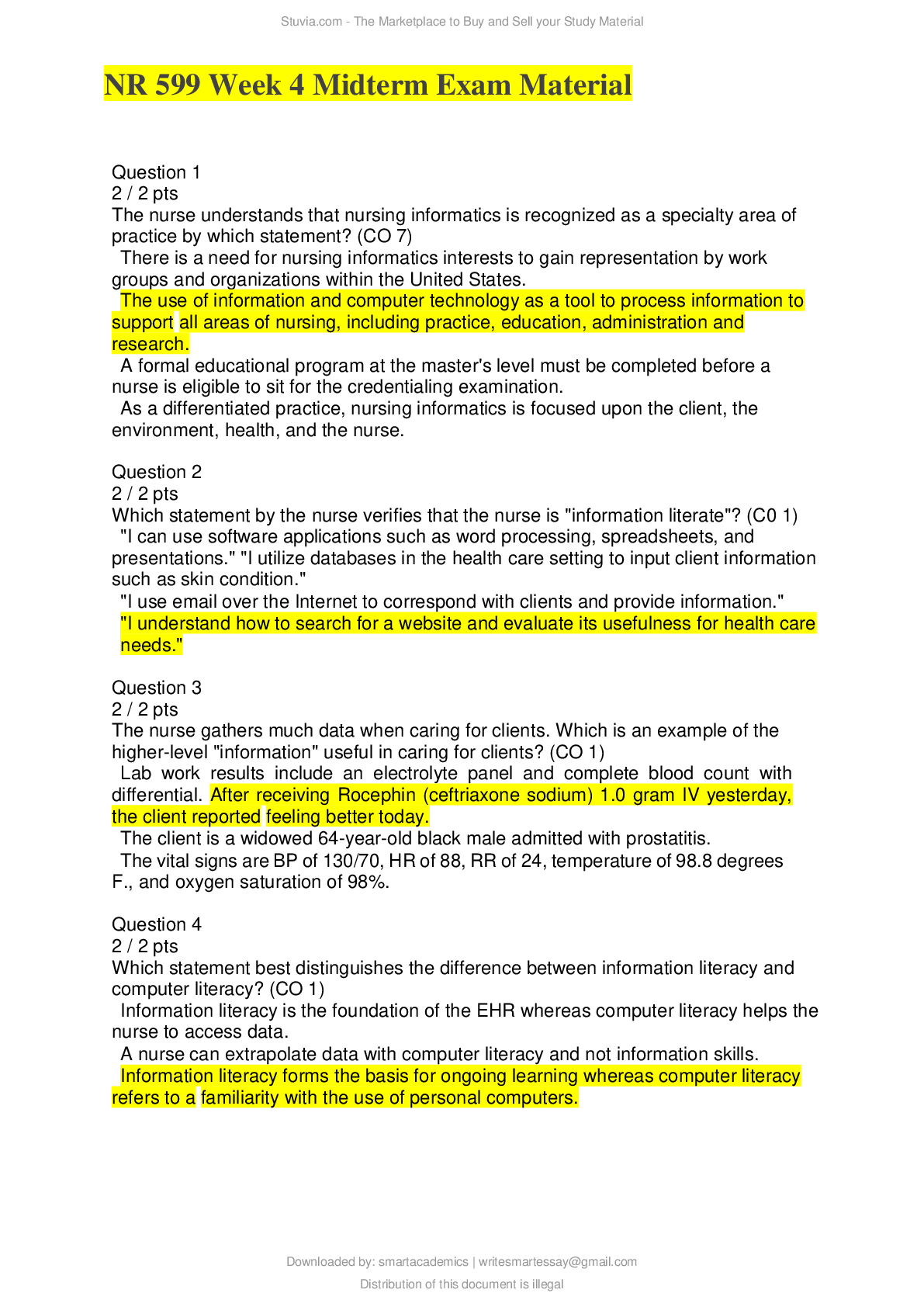
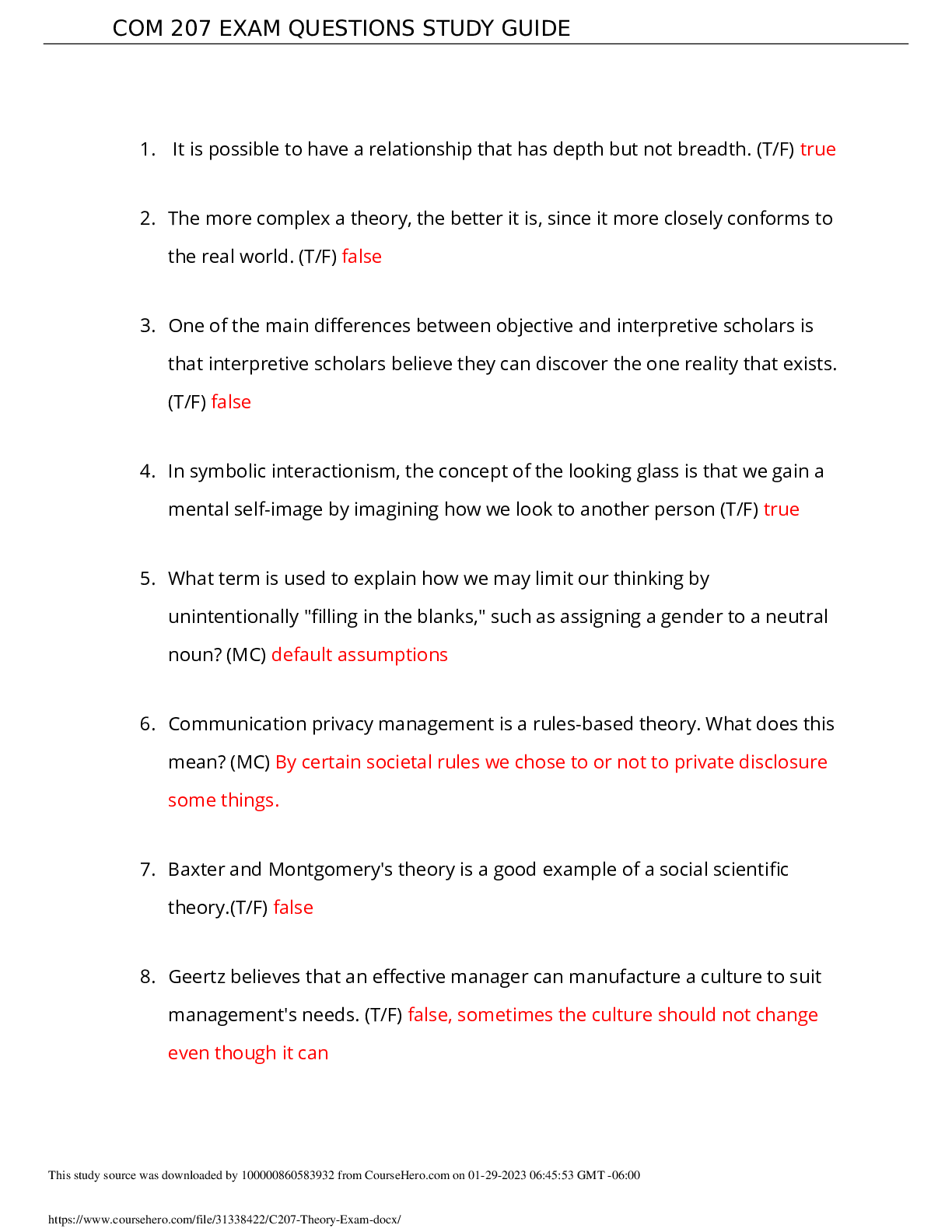
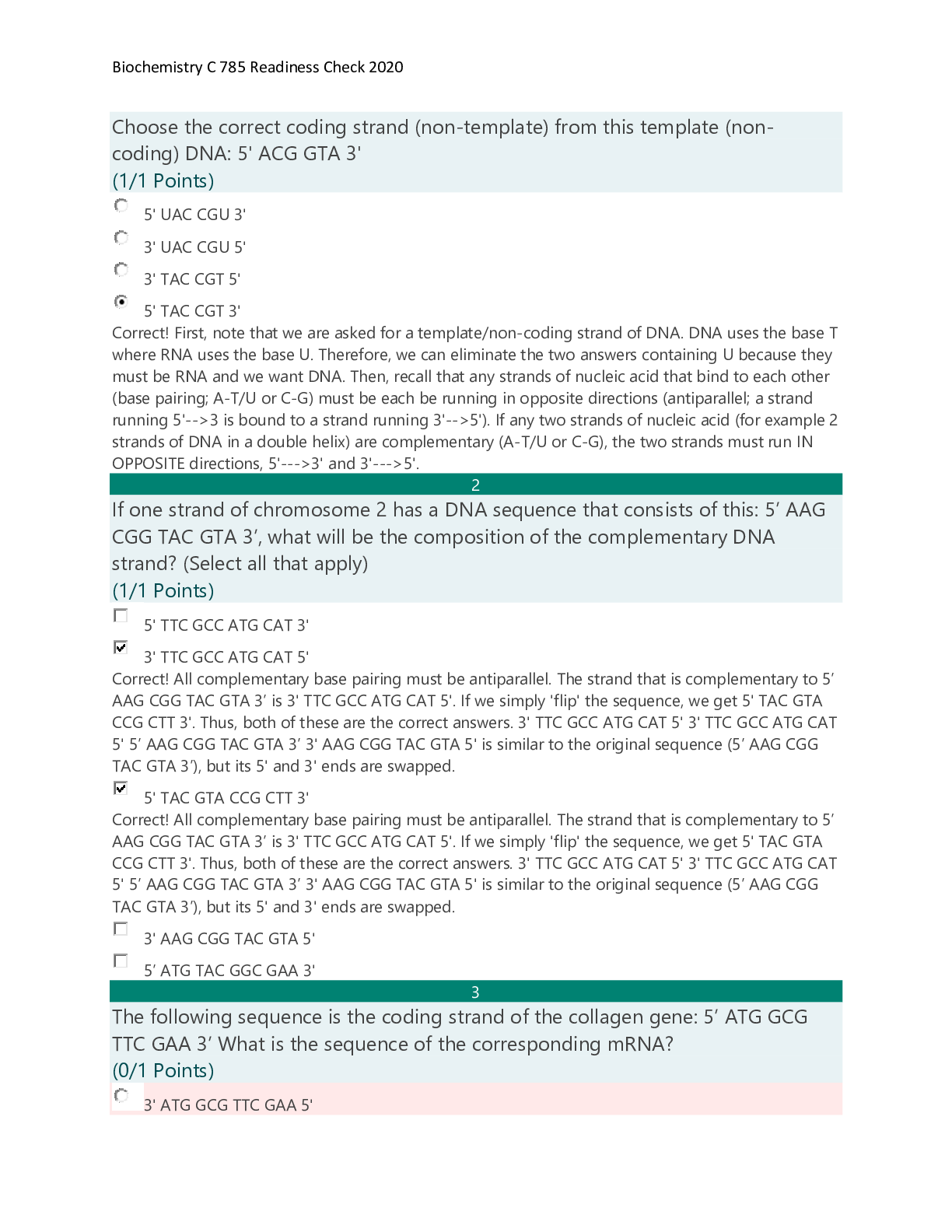
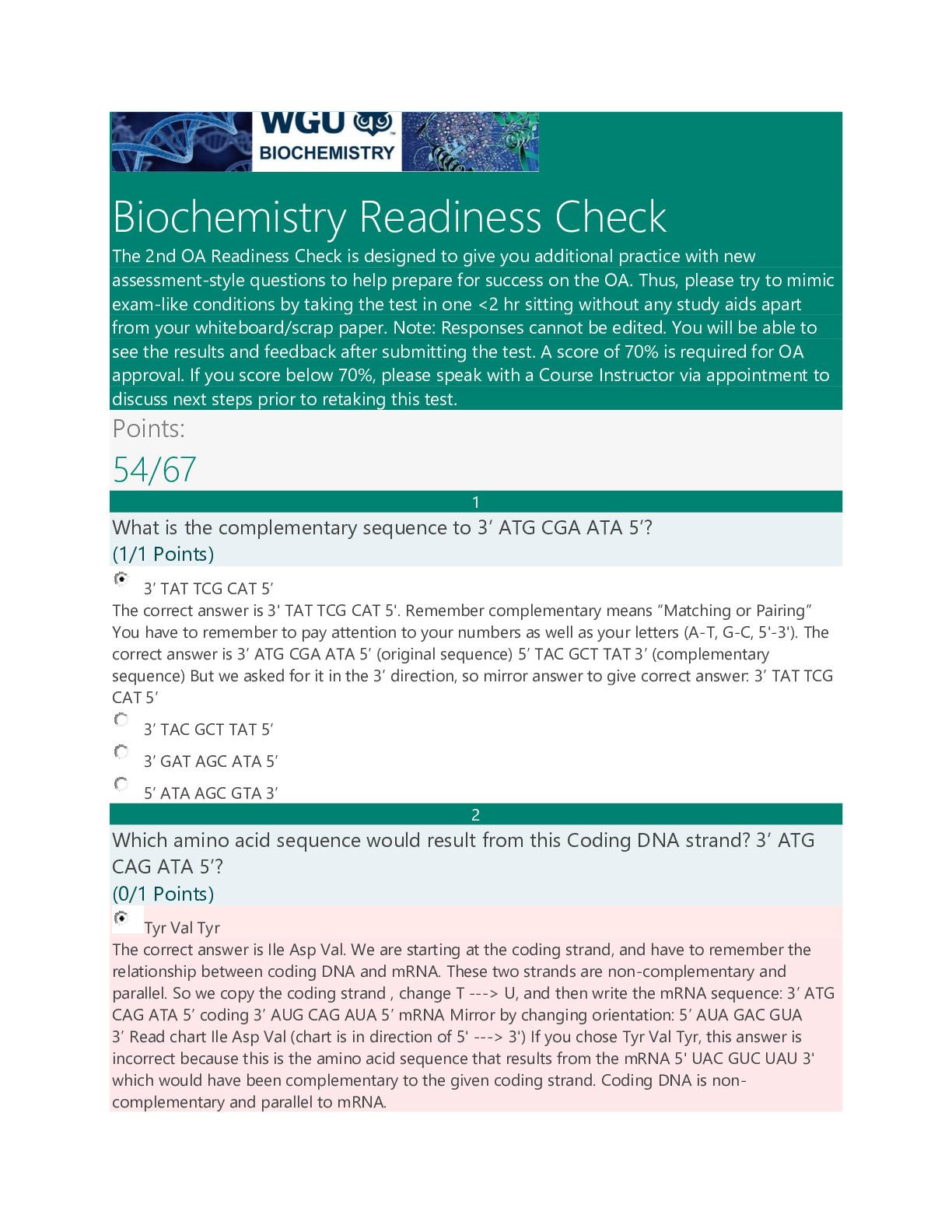
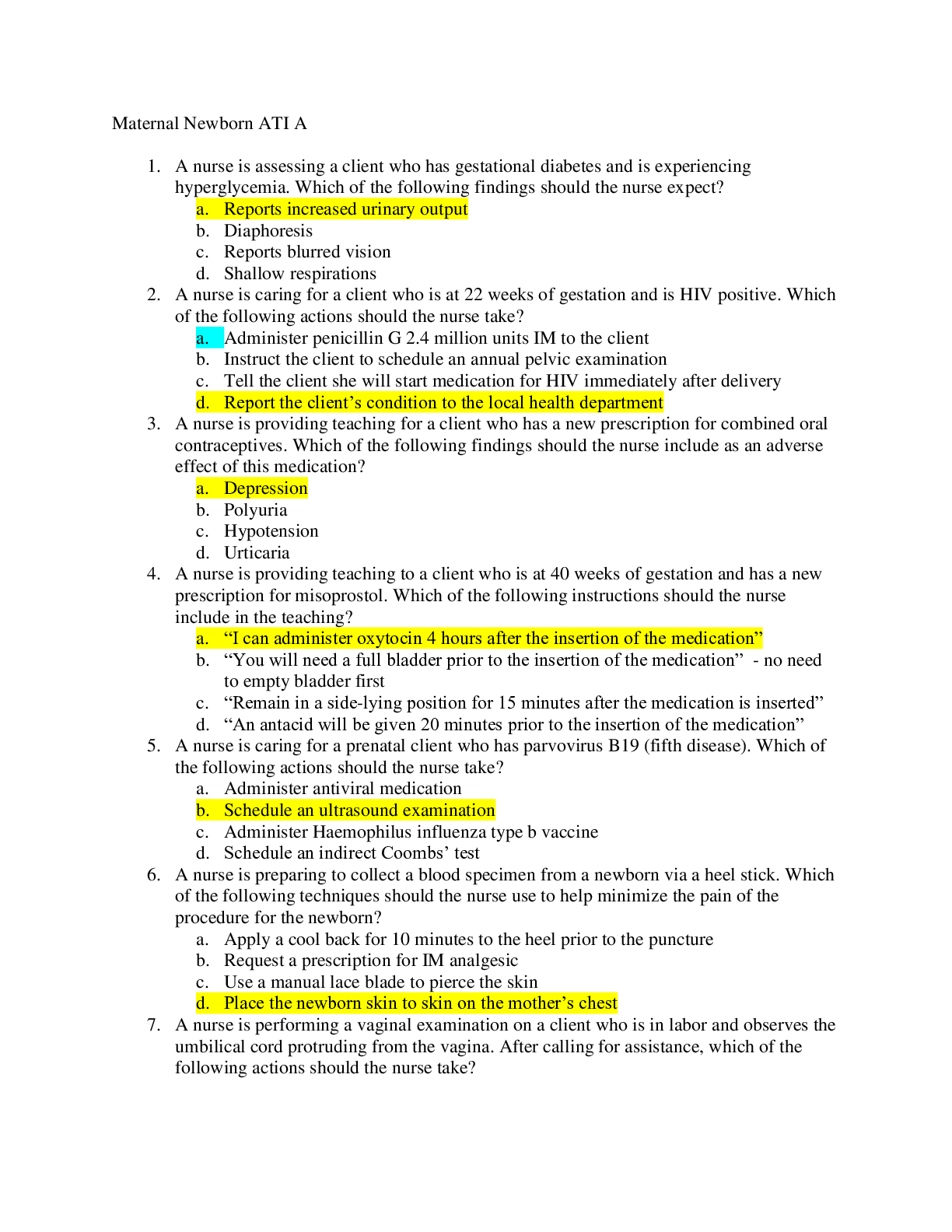

.png)

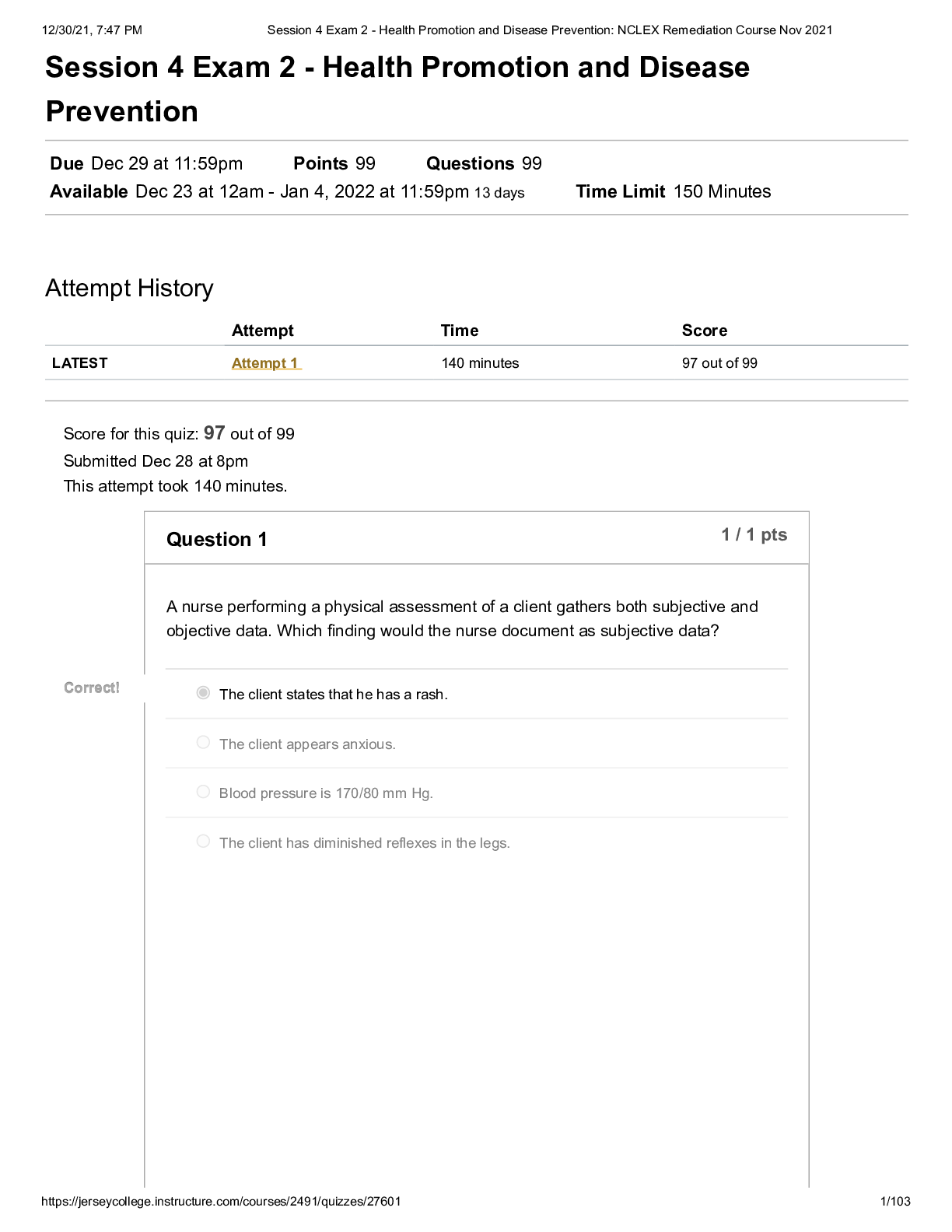
 ORGMED ORGANIC PHARMACEUTICAL PHARMACY.png)
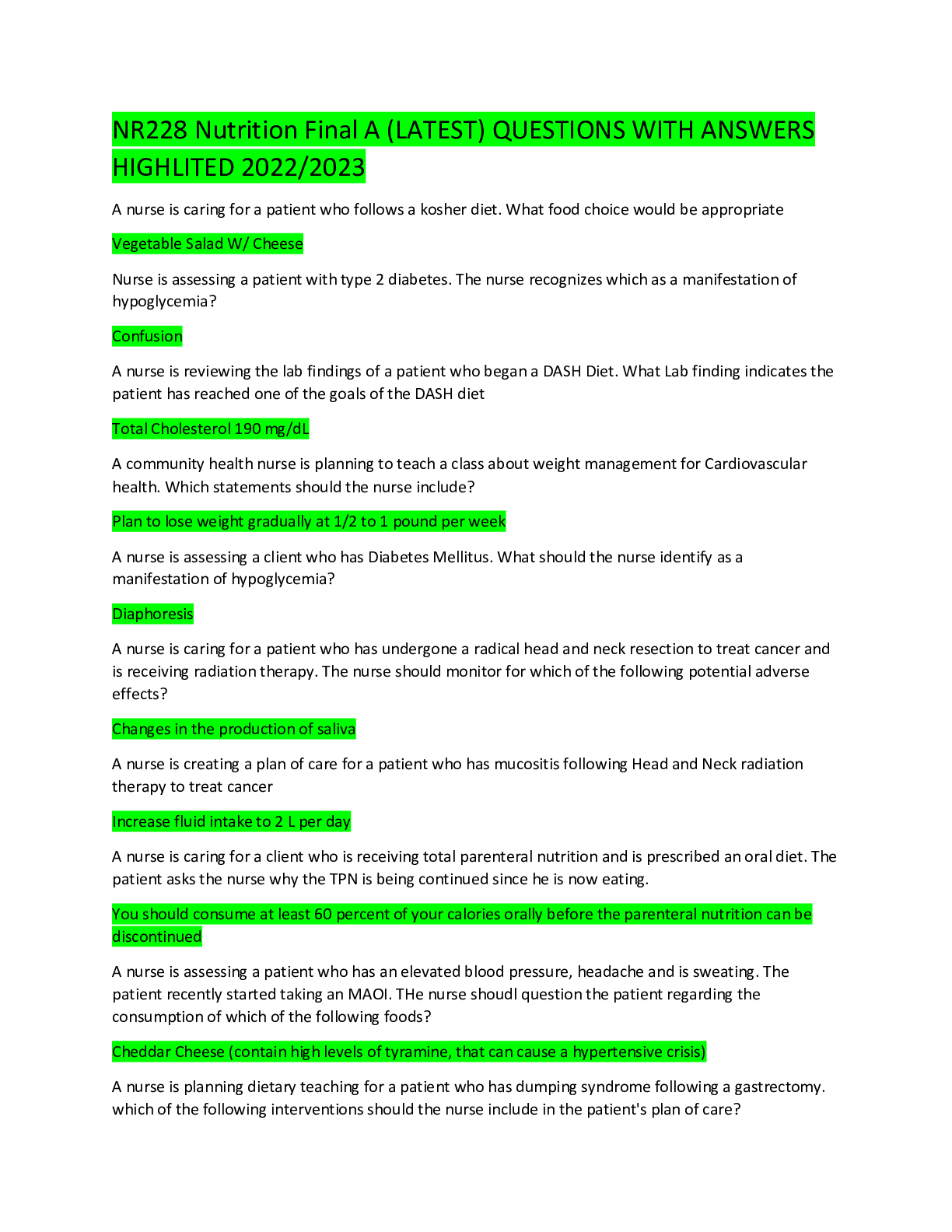
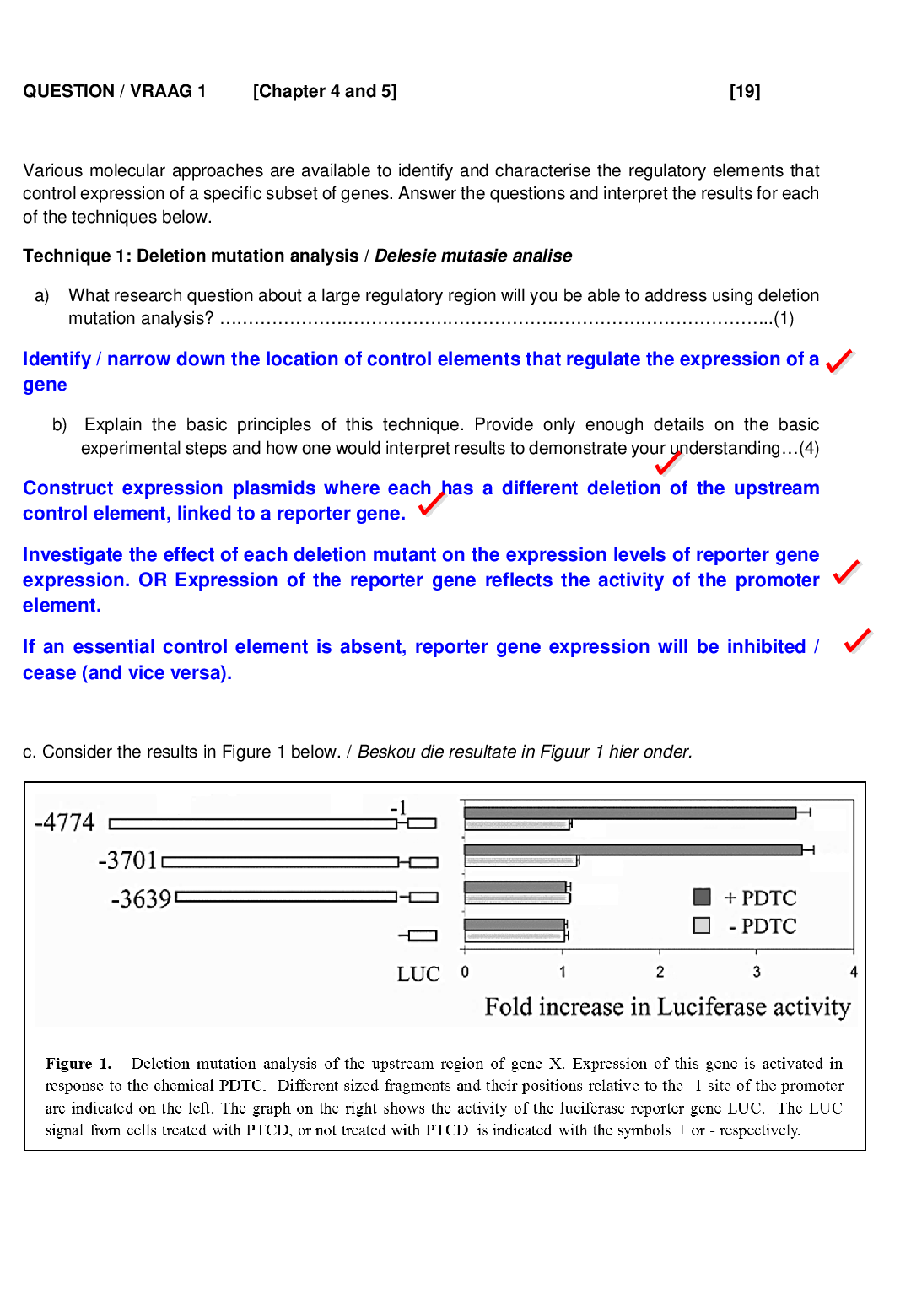
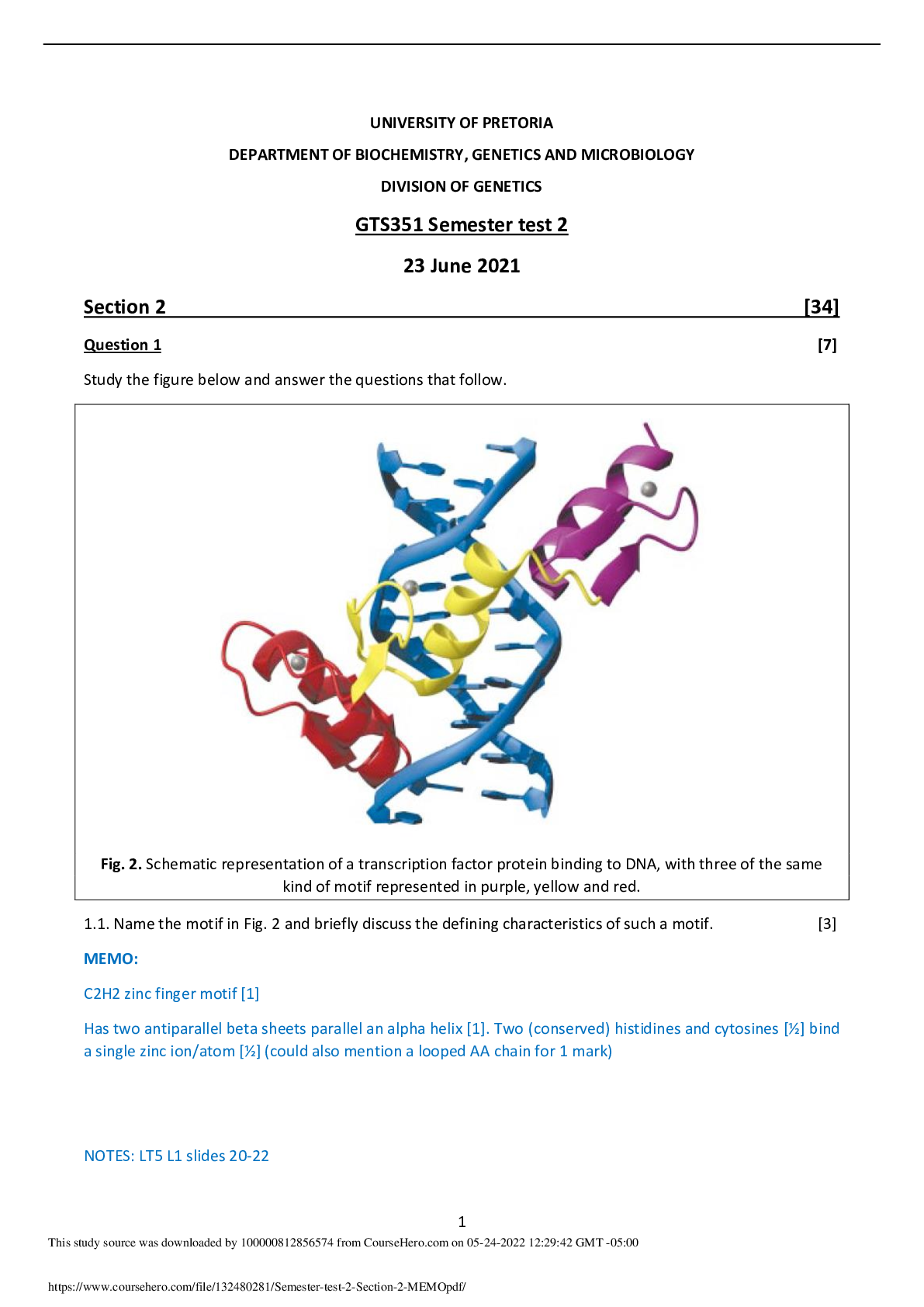
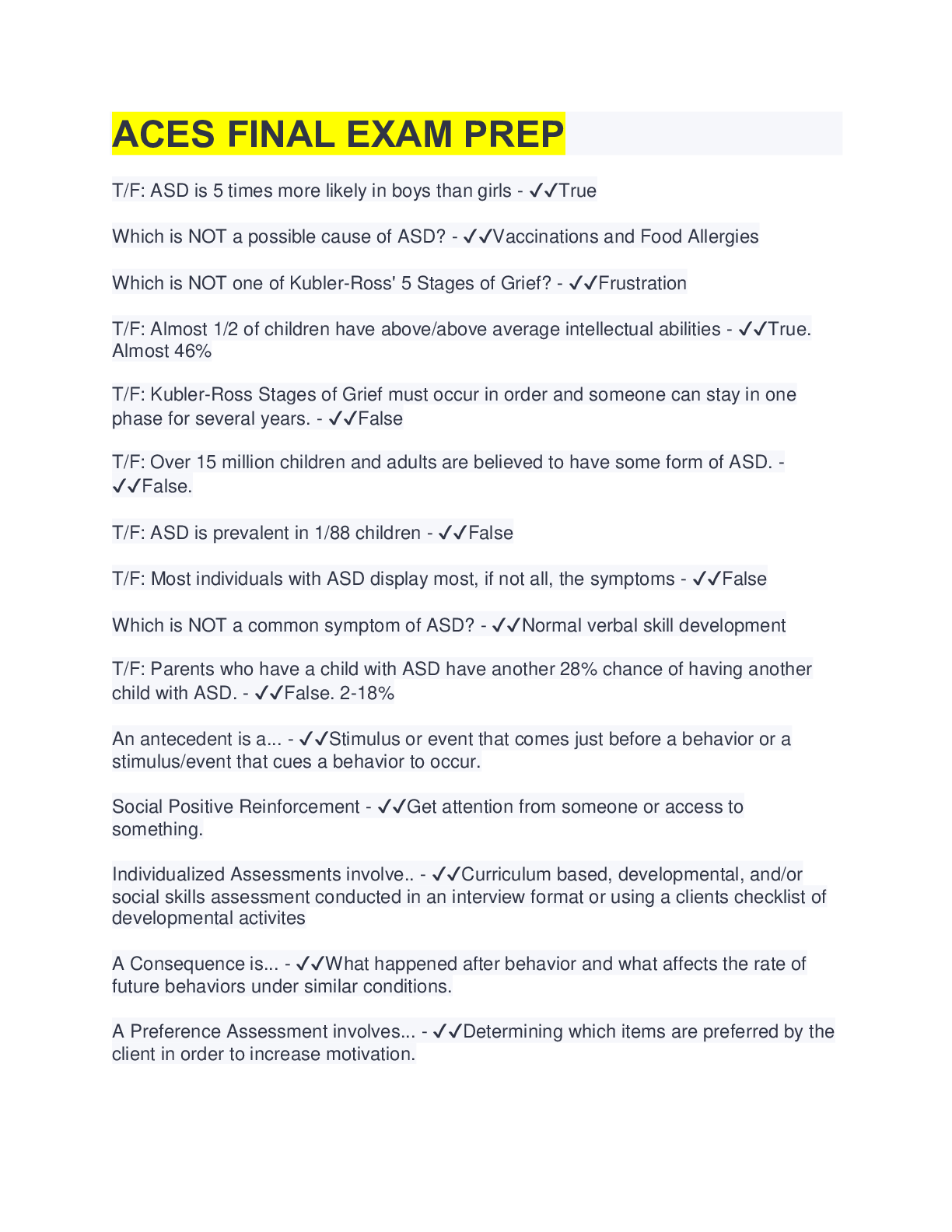
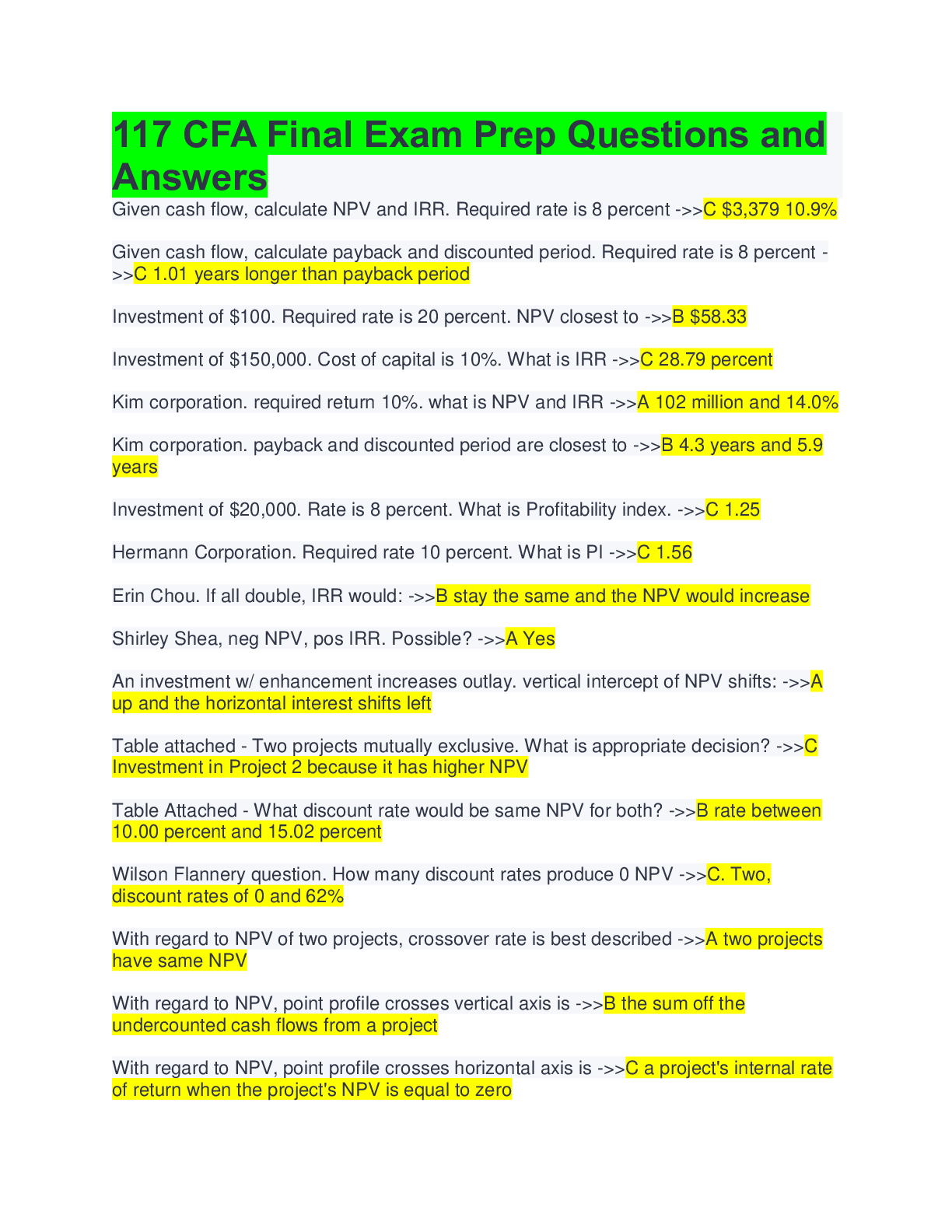
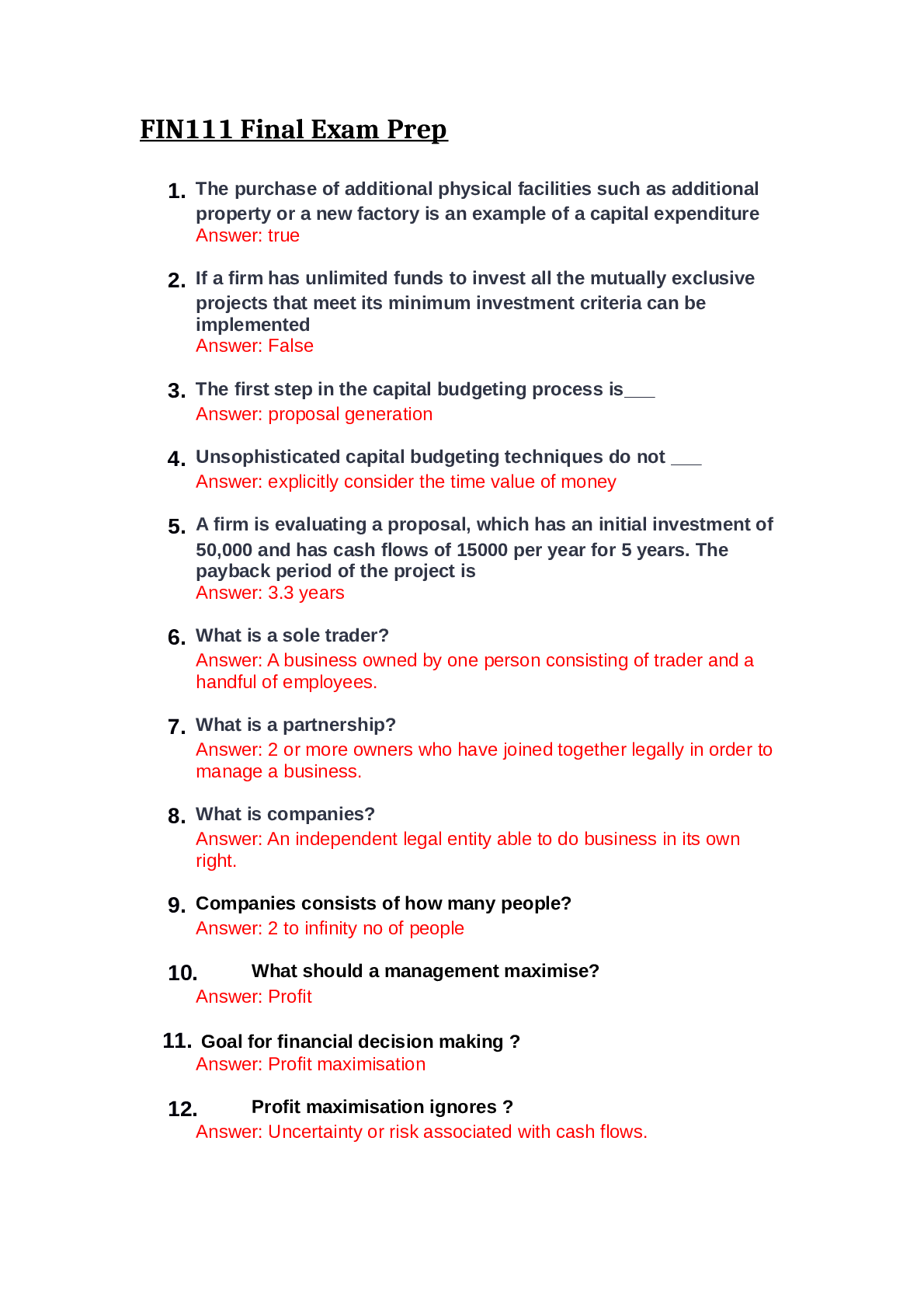
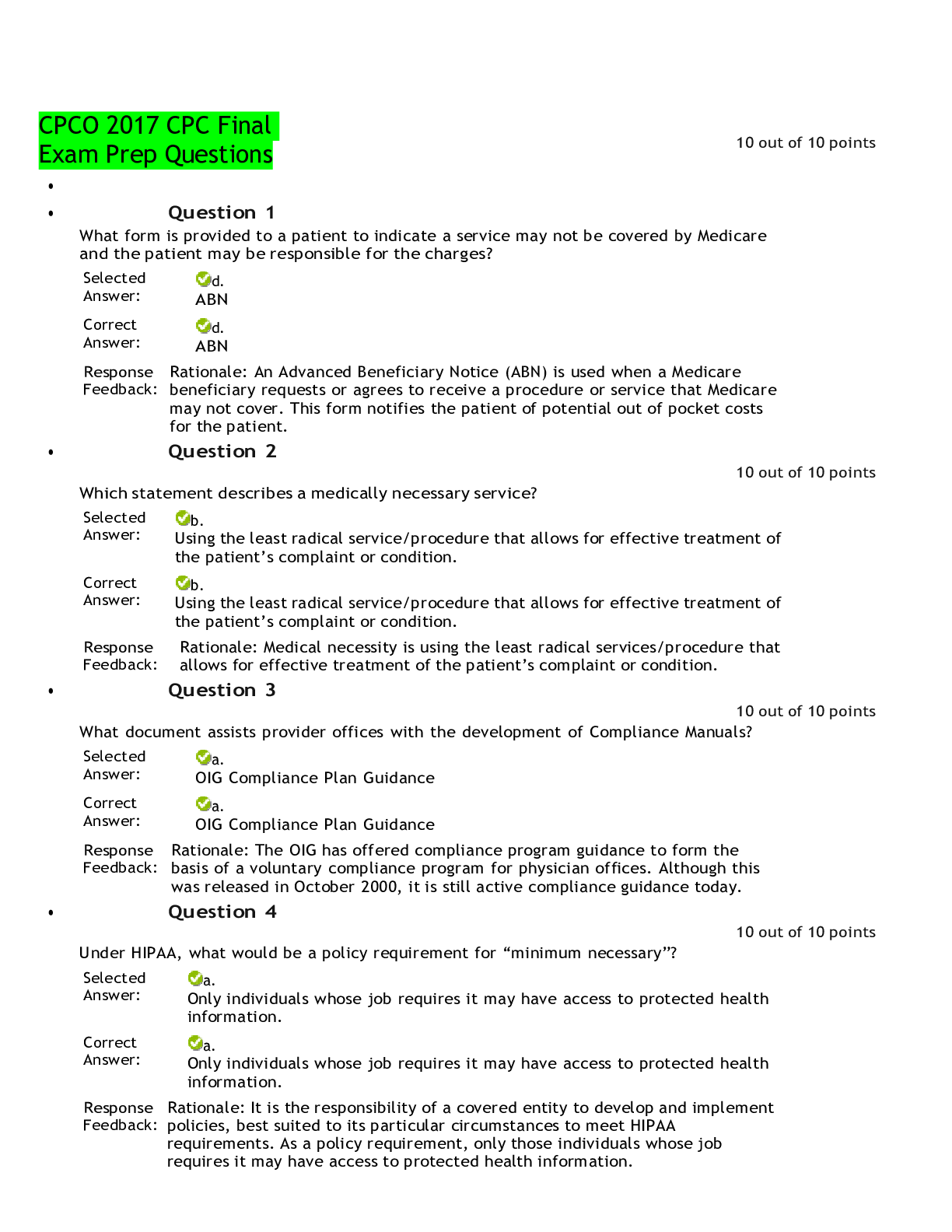


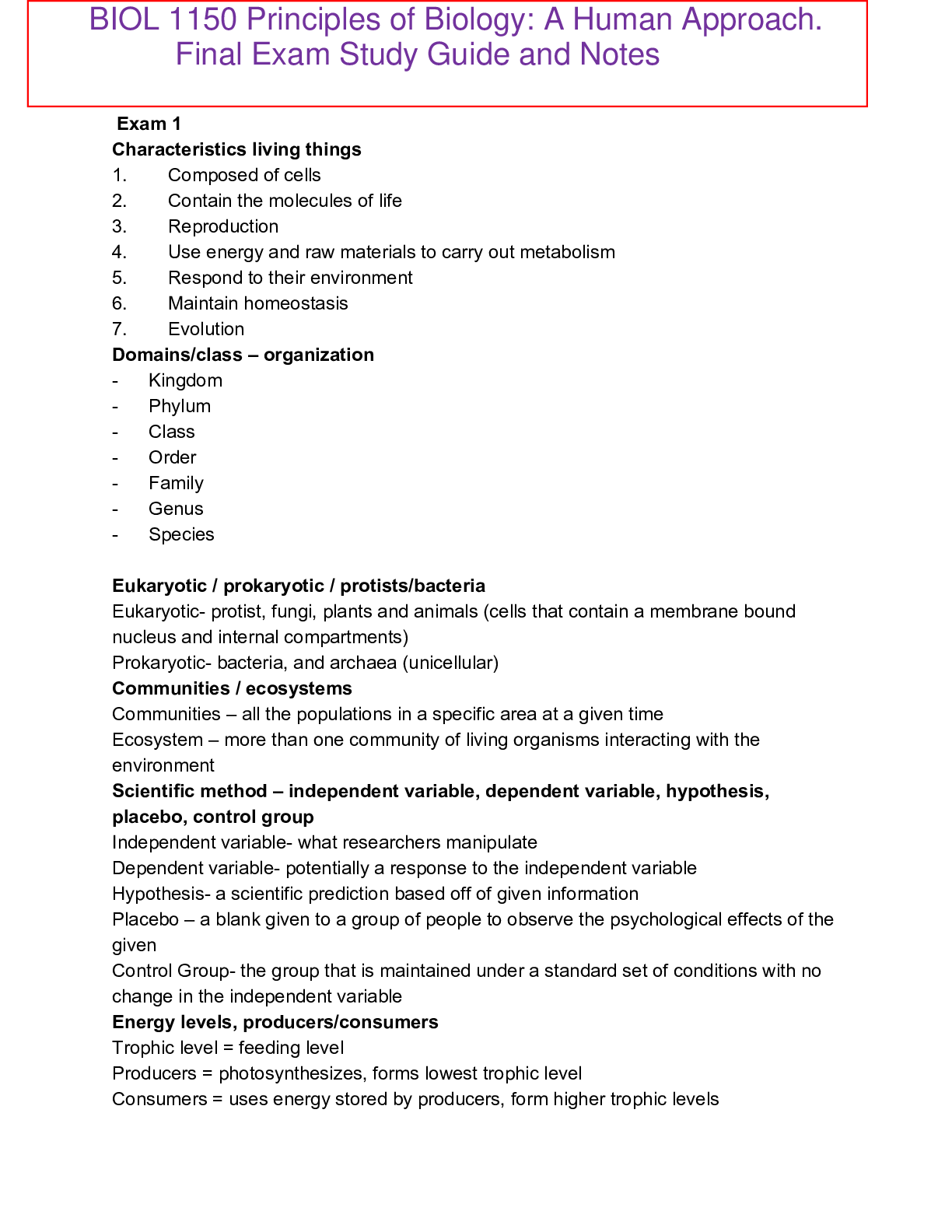

.png)
